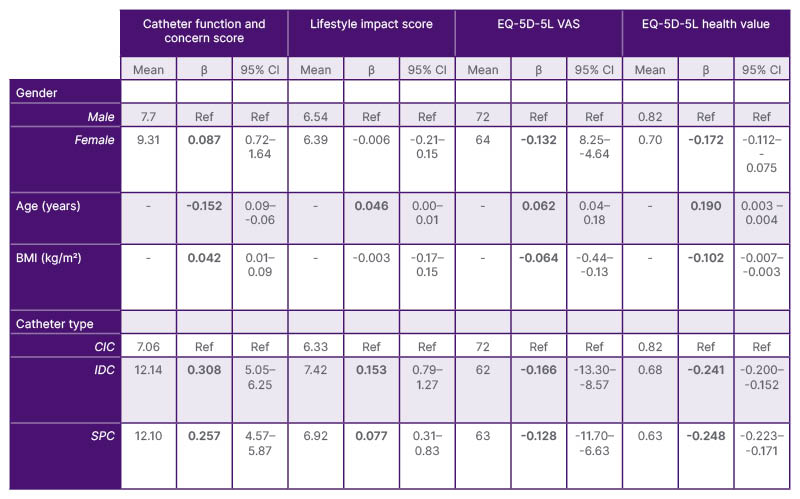INTRODUCTION
In recent decades, the use of urinary catheters in the Netherlands has substantially increased.1,2 Because of the ageing population, the prognosis is that this number will only rise.3 To improve the standard of care, it is important to know more about the catheter users in the Netherlands and their perspective on urinary catheters.
OBJECTIVE
To identify patient satisfaction and quality of life (QoL) in long-term (>6 months) urinary catheter users in the Netherlands.
METHODS
A cross-sectional study was conducted from August–September 2024 at the urology department of Erasmus MC Rotterdam. Patients who perform clean intermittent catheterisation (CIC), or have an indwelling catheter (IDC), or a suprapubic catheter (SPC), were identified through the MediReva database, a Dutch medical specialty supplier. The survey consisted of a validated questionnaire (ICIq-LTCqol) and the EuroQol-5 Dimensions-5 Levels (EQ-5D-5L).
RESULTS
The survey was sent to 10,109 patients. Patients who completed at least 50% of the questionnaire were included in the study, resulting in a total of 3,320 participants (response rate 33%). Among them, 2,634 (79.3%) patients performed CIC, 383 (11.5%) had an IDC, and 303 (9.1%) had an SPC. In this study, 75.9% were male, the mean age was 72 years, and 19.2% had a urinary catheter because of a neurogenic problem.
There was no difference in urinary tract infection (UTI) incidence between the different groups. However, haematuria and bladder stone incidence were lower in the CIC group. Catheter function and concern scores were significantly lower in CIC patients compared to IDC and SPC patients. The lifestyle impact score was significantly lower in CIC patients compared to IDC and SPC patients, and in SPC compared to IDC patients. The EQ-5D-5L health value was significantly higher in CIC patients compared to IDC and SPC patients, and in SPC compared to IDC patients.
When corrected for multiple confounders, IDC and SPC were independently associated with lower patient satisfaction and QoL scores. The multivariate regression is shown in Table 1.

Table 1: Multivariate regression of the different patient satisfaction and EQ-5D-5L scores.
CIC: clean intermittent catheterisation; EQ-5D-5L: EuroQol-5 Dimensions-5 Levels; IDC: indwelling catheter; N/A: not applicable; SPC: suprapubic catheter.
CONCLUSION
This is the largest study to date to compare patient satisfaction and QoL in different long-term urinary catheter users. IDC and SPC are related to lower patient satisfaction and (perceived) QoL and higher catheter-related complications. Therefore, CIC is strongly preferred over IDC and SPC for assisted bladder drainage if the patient is able to perform CIC. Healthcare providers should be aware of the impact of assisted bladder drainage. When selecting a type of catheterisation, the differences should be discussed using shared decision-making.






